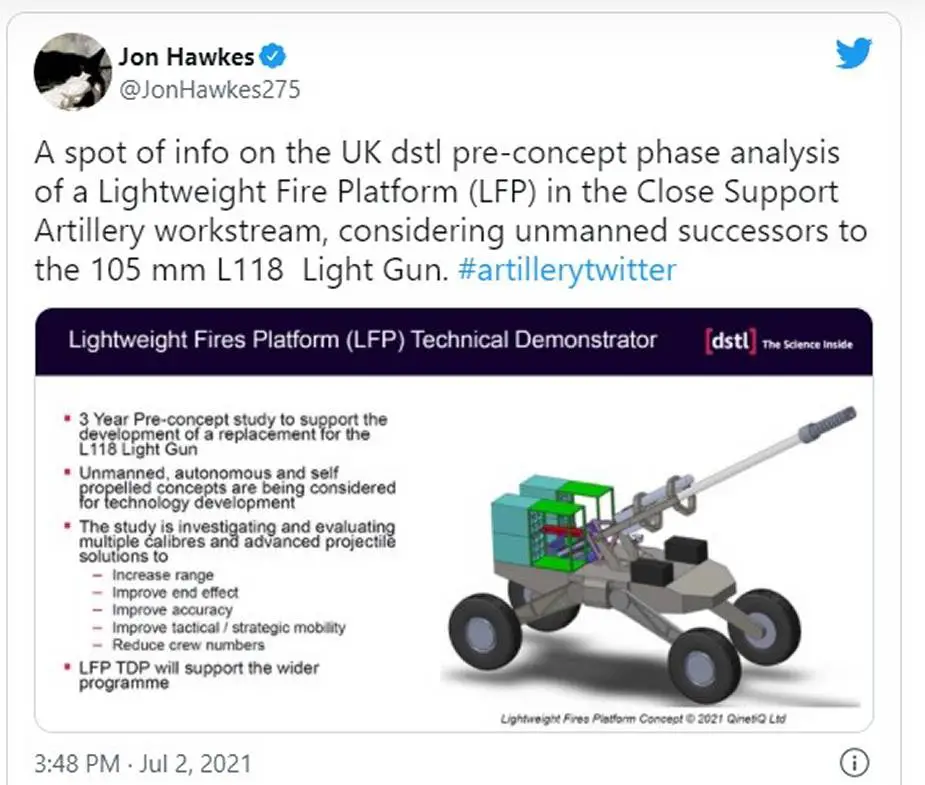The 105 mm L118 Light Gun has been in service with the British Army since 1974 and has been used continually since. Its Out of Service Date (OSD) is 2030. The Defence Science and Technology Laboratory (DSTL) and QinetiQ are working on a Technology Demonstration Programme (TDP) to inform replacement options: the Lightweight Fires Platform (LPF).
Follow Army Recognition on Google News at this link

Soldiers of the Royal Artillery are pictured firing 105mm Light Guns (Picture source: Wikipedia/Richard Watt)
A tweet posted by Jon Hawkes on July 2, 2021, describes autonomous unmanned and self-propelled concepts. The survey areas must include: increase range, improve end effect, improve accuracy, improve tactical/strategic mobility, and reduce crew numbers. Potential options could include a more mobile 105 mm weapon, a 120 mm mortar, or a 5-inch (127 mm) naval gun. An artist’s impression released by DSTL, as an example, shows a mobile 4×4 platform armed with a 105 mm gun.

L118 105mm Light Gun
The L118 light gun was originally produced for the British Army in the 1970s and has been widely exported since, including to the United States, where a modified version is known as the "M119 howitzer". Designated 'light gun', it was designed by the government Royal Armament Research and Development Establishment (RARDE), located at Fort Halstead, in Kent. Prototypes were tested in 1968. However, it soon emerged that some increase in weight was needed for a gun with the requisite robustness, and several assemblies were substantially redesigned. The original production, which was authorised in late 1975, was by Royal Ordnance Factory, ROF Nottingham, which has since been incorporated into BAE Systems Land and Armaments. Deliveries started in 1976.
The light gun then entered service with the British Army in 1976. The new weapon was heavier than its predecessor, but new and more capable helicopters such as the French SA 330 Puma and British Westland Sea King, which could carry the new weapon, were entering service at the same time. A new vehicle, the Land Rover 101 Forward Control ("Land Rover, one-ton"), was designed as the prime mover in the field for the light gun (and the Rapier air-defence missile launcher). Since the end of the 1990s, the British Army has used Pinzgauer ATVs as their gun tractors. In Arctic service, and elsewhere, the gun is towed by the Hägglunds Bv 206 and is fitted with skis when over snow.














